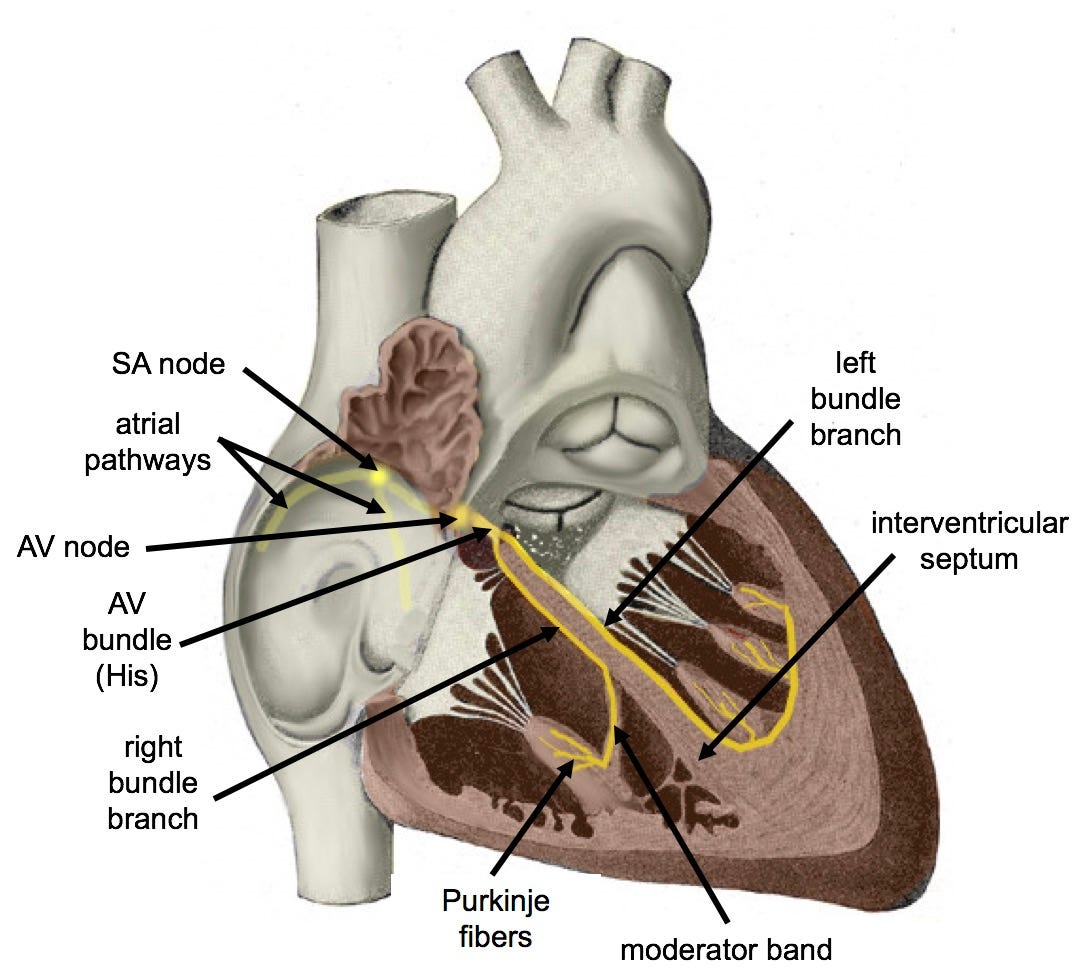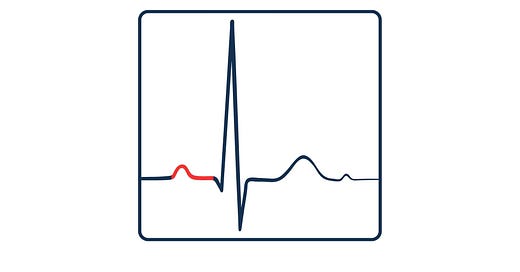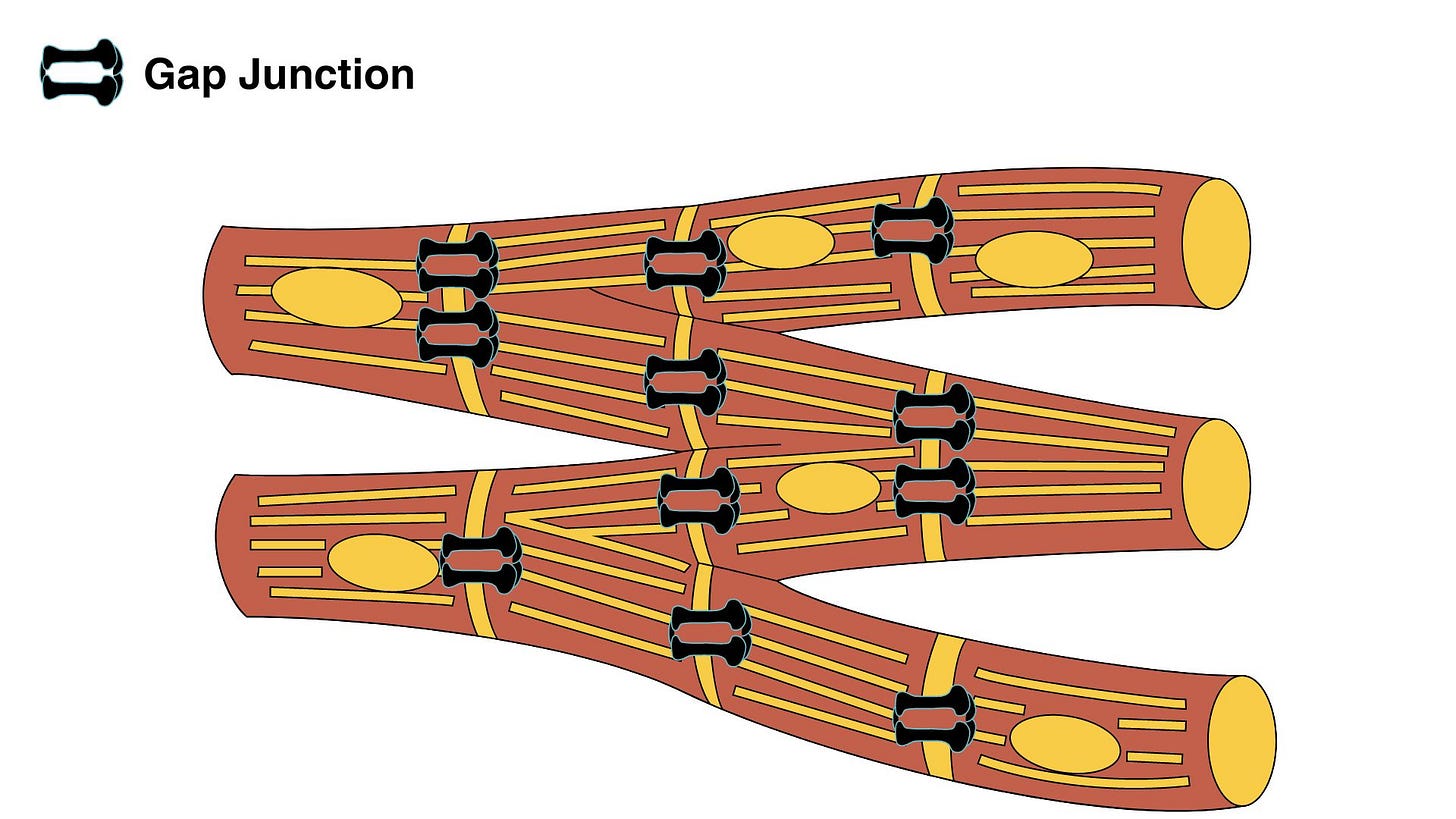A Window to The Heart’s Timekeeper: PR Interval
Everything you need to know about the PR interval, in simple words!
Here are a few warm-up questions to get our brains going:
ECG Intervals
When referring to "intervals" (like the PR and QT intervals) on an ECG, we want to know their duration only. If we wanted to know about morphology, we would be referring to the PR segment, not interval (more on that in a future post).
The PR Interval
The PR interval is the period from the beginning of the P wave until the beginning of the QRS complex (excluding the QRS complex). Therefore, the PR interval includes the P wave and the PR segment (the line connecting the P wave to the QRS complex), as seen in the picture below.

If the PR interval ends just before the QRS complex, why is it not called the PQ interval?
Indirect answer: Sometimes, it is referred to as the PQ interval (rarely).
Devil’s advocate answer: Sometimes, the QRS complex starts with an R wave, such as in lead V1.
Truthful-direct answer: I don't know…
The physiological representation of the PR interval is the depolarisation of the atria (P wave) AND the depolarisation of the AV junction (AV node and His bundle). In the following image, you can see the location of the AV junction in relation to the atria and the ventricles.

Also, ise you hadn’t noticed, the AV junction (similarly to the SA node) is comple silent on the transthoracic ECG (i.e. we don’t see any spikes recorded because of its depolarisation).
The Heart’s Timekeeper
The post is titled "A Window to the Heart's Timekeeper: PR Interval" because the AV junction is the reason why there’s a delay between atrial and ventricular depolarisation and contraction. This delay allows the ventricles to fill with the last volume of blood from the atria before contracting, which optimises cardiac output.
Think of the AV junction as the conductor of a big band. It quietly but firmly keeps everything working together. It's like a finely tuned machine - everything has to be just right. When it is, our heart beats in perfect rhythm. But if something goes wrong, even a little bit, it can throw everything off. It's a reminder of how important balance is to our health and how amazing it is that our heart beats just right, every single time.
Here's Why There's a Conduction Delay in the AV Junction
The answer is fewer gap junctions between the cells in the AV junction.
Gap junctions are intercellular channels for ion transmission (i.e. for electrical current flow). The number of gap junctions in the cells of the AV junction is diminished.
Imagine the gap junctions as doors allowing access to ions (i.e. electrical current) from one cardiac cell to the next. The fewer doors you have (increased resistance), the more difficult it becomes for ions to move (reduced current). This is governed by Ohm’s law, which states that current flow is directly proportional to the voltage across two points (in this case, across the cell membrane, also known as membrane potential) and inversely proportional to the resistance between them (the number of gap junctions).
I: current
V: voltage
R: resistance
The fewer gap junctions you have, the greater the resistance.
Now, let's see the questions you answered earlier.
What is the normal range for the PR interval (in adults)?
The normal PR interval in most adults is 120 - 200 msec.
Remember, this duration includes the duration of the P wave. You start measuring the PR interval from the start of the P wave.
"The length of the PR interval should always remain constant unless there is an abnormality present.”
This statement is false.
Firstly, the PR interval is not exactly the same in every lead and can vary slightly from lead to lead.
Secondly, the PR interval can vary with the heart rate (HR). In slow HR, the PR interval becomes longer. This is why, for example, in athletes, who may have a very slow resting HR (30-40 bpm), it’s normal to see a PR interval greater than 200 msec (1st-degree AV block). In the same vein, when the HR increases, the PR interval becomes shorter and can sometimes go down to 100 msec without indicating pre-excitation.
What does a prolonged PR interval indicate?
A prolonged PR interval indicates Atrio-Ventricular conduction delay. This means that there is an abnormal delay of conduction between the atria and ventricles.
Inter-Ventricular conduction delay means abnormal delay BETWEEN the ventricles (between the left and right ventricle), whereas Intra-Ventricular conduction delay means abnormal delay WITHIN one ventricle.
Why is this important? Because abnormal AV conduction delay (known as AV block) can cause syncope, severe bradycardia, cardiac arrest, or it might be an indication of significant cardiac disease (depending on the severity of the AV block).
“A short PR interval indicates pre-excitation.”
This is true, as implied above. Pre-excitation means that the ventricles are depolarised earlier than they should be. A typical cause of pre-excitation is Wolff-Parkinson-White (WPW) syndrome, which is beyond the scope of this post.
Why is this important? Because pre-excitation (like in WPW) can cause significant arrhythmias.
Conclusion
The PR interval is the period from the beginning of the P wave until the beginning of the QRS complex (excluding the QRS complex).
The physiological representation of the PR interval is the depolarisation of the atria (P wave) AND the depolarisation of the AV junction (AV node and His bundle).
The AV junction is the reason why there’s a delay between atrial and ventricular depolarisation and contraction. The delay is because of fewer gap junctions in the AV junction cells.
A prolonged PR interval indicates Atrio-Ventricular conduction delay.
A short PR interval indicates pre-excitation.
Feedback - This newsletter is for you!
Your voice is more important than my posts. By sharing your thoughts, you can directly shape the content of this newsletter, making it more relevant and valuable to your studies and interests.
So please take a moment to share your thoughts. And if you found this post helpful, consider sharing it with your peers.
Together, we can make Squiggly Lines a valuable resource for everyone!
Thank you!
What improvements would you recommend for Squiggly Lines? What would you like to see more of in the publication?
If you answered yes, please take a moment to share Squiggly Lines! This will help grow our community of enthusiastic learners!
References
Goldberger, A., Shvilkin, A. and Goldberger, Z. (no date) Goldberger’s Clinical Electrocardiography: A Simplified Approach. 9th ed. ELSEVIER.
Hall, J.E. and Hall, M.E. (2020) Guyton and Hall Textbook of Medical Physiology. 14th ed. Philadelphia, PA: Elsevier.
Drezner JA, Sharma S, Baggish A, Papadakis M, Wilson MG, Prutkin JM, Gerche A, Ackerman MJ, Borjesson M, Salerno JC, Asif IM, Owens DS, Chung EH, Emery MS, Froelicher VF, Heidbuchel H, Adamuz C, Asplund CA, Cohen G, Harmon KG, Marek JC, Molossi S, Niebauer J, Pelto HF, Perez MV, Riding NR, Saarel T, Schmied CM, Shipon DM, Stein R, Vetter VL, Pelliccia A, Corrado D. International criteria for electrocardiographic interpretation in athletes: Consensus statement. Br J Sports Med. 2017 May;51(9):704-731. doi: 10.1136/bjsports-2016-097331. Epub 2017 Mar 3. PMID: 28258178.




